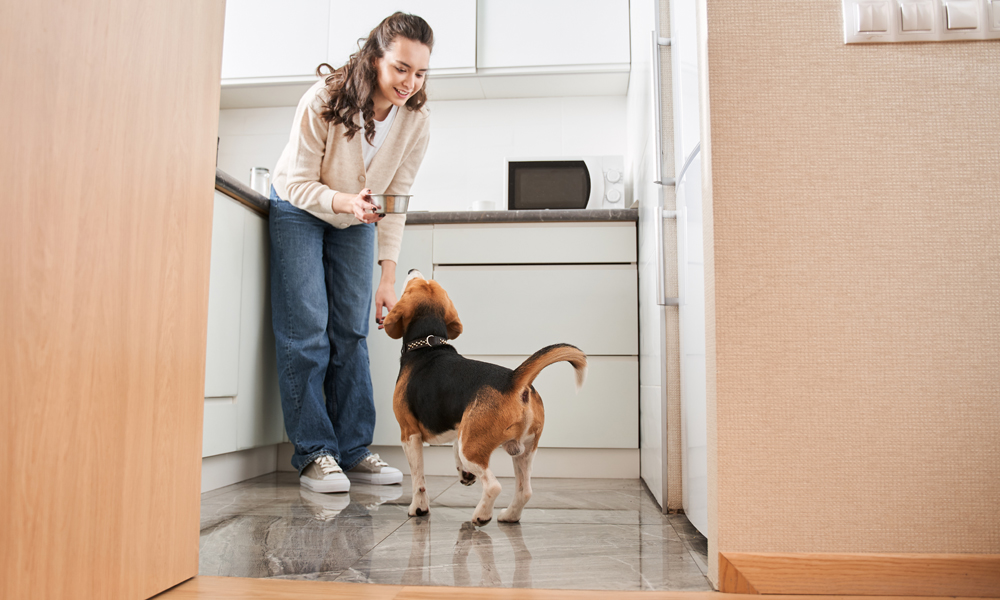Just like humans, dogs can suffer from environmental allergies triggered by pollen, mould, and dust mites. These allergens can cause itching, redness, and discomfort, leading to frequent scratching, licking, or even more serious skin conditions. If your dog shows signs of environmental allergies, it’s important to take proactive steps to minimise their exposure to common allergens. In this post, we’ll explore how pollen, mould, and dust mites can affect your dog and share practical tips for reducing their exposure to help them live more comfortably.
How Environmental Allergens Affect Dogs
- Pollen: During certain seasons, particularly spring and summer, pollen from grasses, trees, and weeds can be found in abundance outdoors. Dogs that spend time outside can easily come into contact with pollen, which may cling to their fur and skin. For dogs sensitive to pollen, this can result in persistent itching and sneezing, especially after walks or outdoor play.
- Mould: Mould thrives in damp environments and can be present indoors and outdoors. Whether it’s from wet grass, decaying leaves, or even inside homes with high humidity levels, mould spores can trigger allergic reactions in dogs. Common symptoms include respiratory issues, itchy skin, and watery eyes.
- Dust Mites: Dust mites are tiny, invisible creatures that can be found in carpets, upholstery, bedding, and even dog beds. For dogs sensitive to dust mites, their presence can lead to frequent scratching, inflamed skin, and discomfort. These allergens are particularly troublesome in indoor environments, where they can accumulate over time without regular cleaning.
Tips for Minimising Your Dog’s Exposure to Allergens
While it’s impossible to completely eliminate allergens from your dog’s environment, there are several steps you can take to significantly reduce their exposure and manage their allergy symptoms:
- Keep Windows Closed: While it’s tempting to let fresh air into your home, keeping windows closed during high pollen seasons can help minimise the amount of pollen that enters your living space. Instead, rely on fans or air conditioning to regulate the temperature inside without inviting allergens indoors.
- Regular Cleaning: Vacuuming frequently, especially in areas where your dog spends the most time, can help reduce the build-up of dust, pollen, and other allergens. Pay extra attention to carpets, rugs, and upholstery, which tend to trap allergens. If possible, opt for a vacuum cleaner with a HEPA filter, as these are specifically designed to trap smaller allergen particles.
- Use Air Purifiers: Air purifiers with HEPA filters can be incredibly effective in capturing airborne allergens like pollen, dust mites, and mould spores. Placing an air purifier in the rooms where your dog spends the most time can make a noticeable difference in reducing allergen exposure.
- Wash Your Dog’s Bedding Regularly: Your dog’s bedding can harbour dust mites and other allergens, so it’s essential to wash it at least once a week in hot water. This will help kill off any mites and remove pollen or mould that may have accumulated. Make sure to also wash any blankets, cushions, or soft toys they regularly use.
- Wipe Your Dog’s Paws and Fur After Walks: After outdoor adventures, your dog’s fur and paws can be coated with pollen and other environmental allergens. Wiping them down with a damp cloth or using hypoallergenic dog wipes can help remove these allergens before they have a chance to irritate your dog’s skin or be carried inside your home.
- Maintain Proper Ventilation and Humidity Levels: Mould thrives in humid environments, so it’s important to keep your home well-ventilated and control humidity levels. Consider using a dehumidifier in damp areas like basements or bathrooms, and ensure your dog’s living spaces are dry and free from moisture build-up.
- Bathe Your Dog Regularly: Regular baths can help remove allergens from your dog’s skin and coat. Be sure to use a hypoallergenic dog shampoo to avoid further irritating their skin. For dogs with sensitive skin, consulting with your vet about the best bathing routine can help ensure you’re providing the right care without over-washing.
Managing Your Dog’s Allergies
If your dog is showing persistent signs of environmental allergies, it’s essential to consult with a veterinarian to confirm the diagnosis and explore treatment options. In some cases, your vet may recommend antihistamines, allergy shots, or specialised diets to help manage symptoms.
For more information on how to help your dog cope with allergies, check out this helpful resource on overcoming dog allergies. With the right approach, you can minimise your dog’s exposure to environmental allergens and provide them with much-needed relief from discomfort.
Conclusion
Environmental allergies can be a source of frustration for both dogs and their owners, but with the right strategies, you can significantly reduce your dog’s exposure to allergens like pollen, mould, and dust mites. By keeping windows closed, regularly cleaning, using air purifiers, and maintaining proper ventilation, you can create a healthier environment for your dog to thrive in. Always consult with a vet if your dog’s symptoms persist, as professional guidance can make all the difference in helping them overcome the challenges of allergies.


